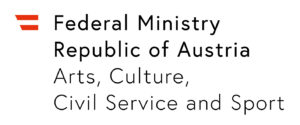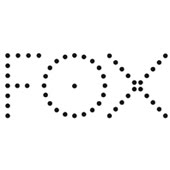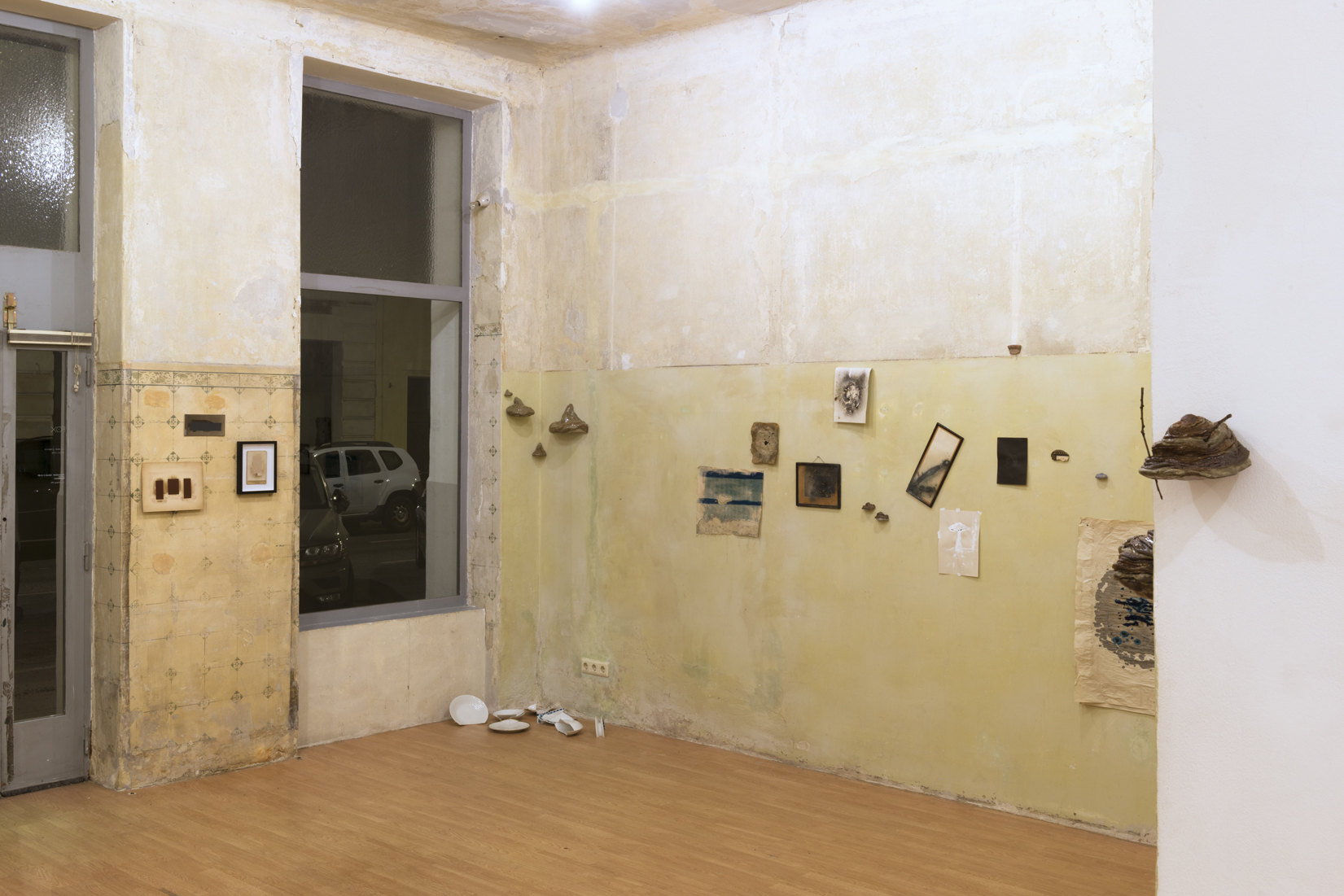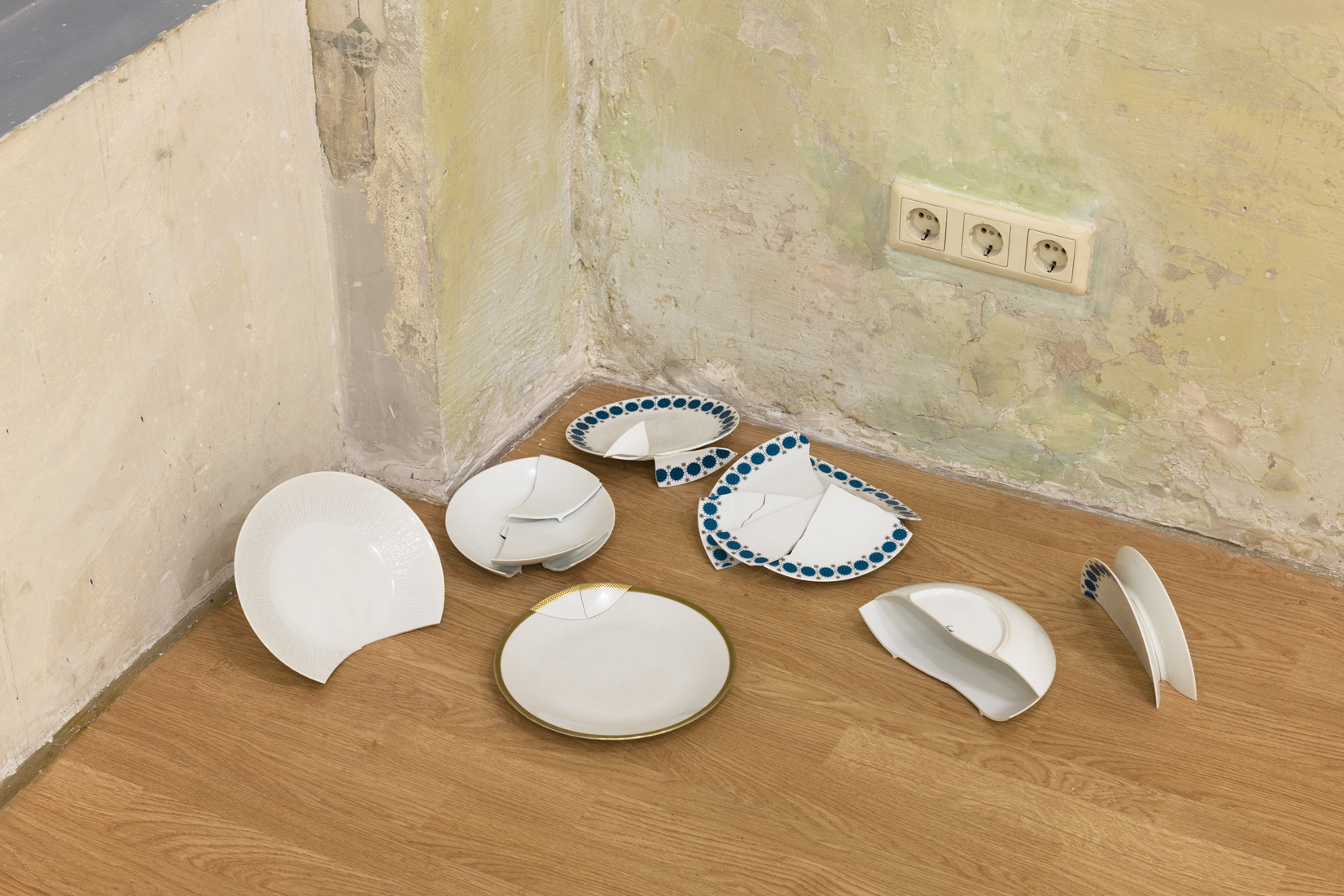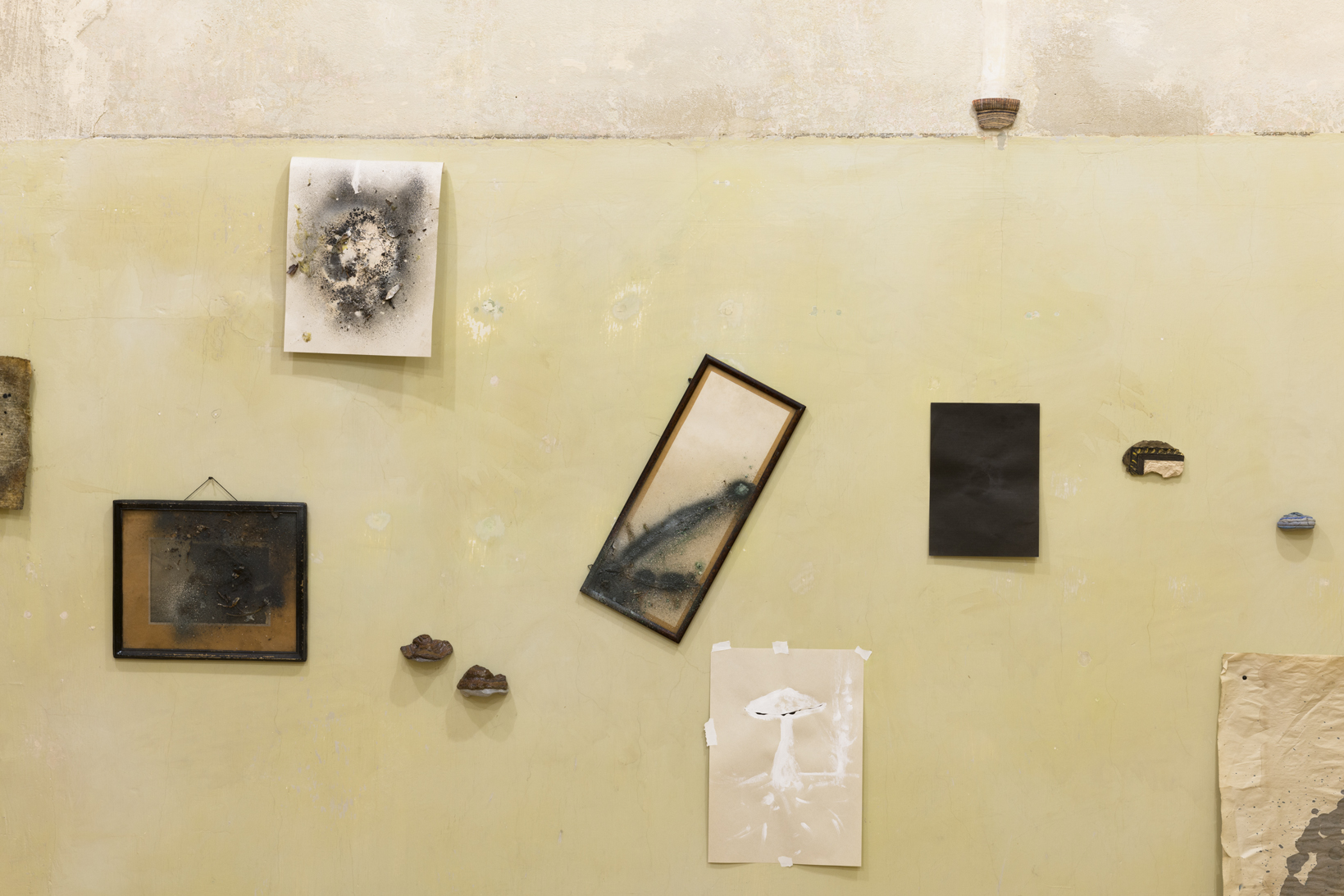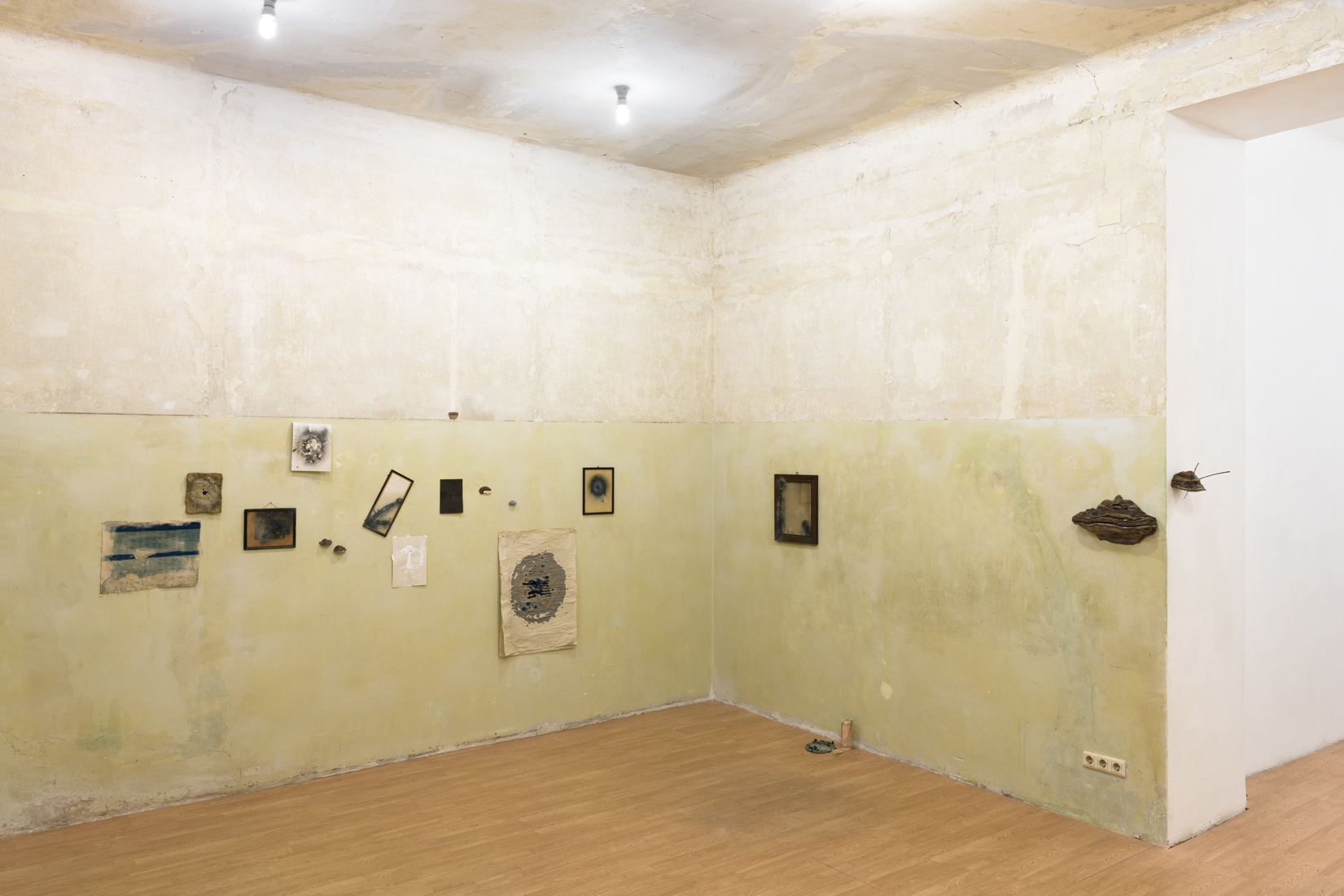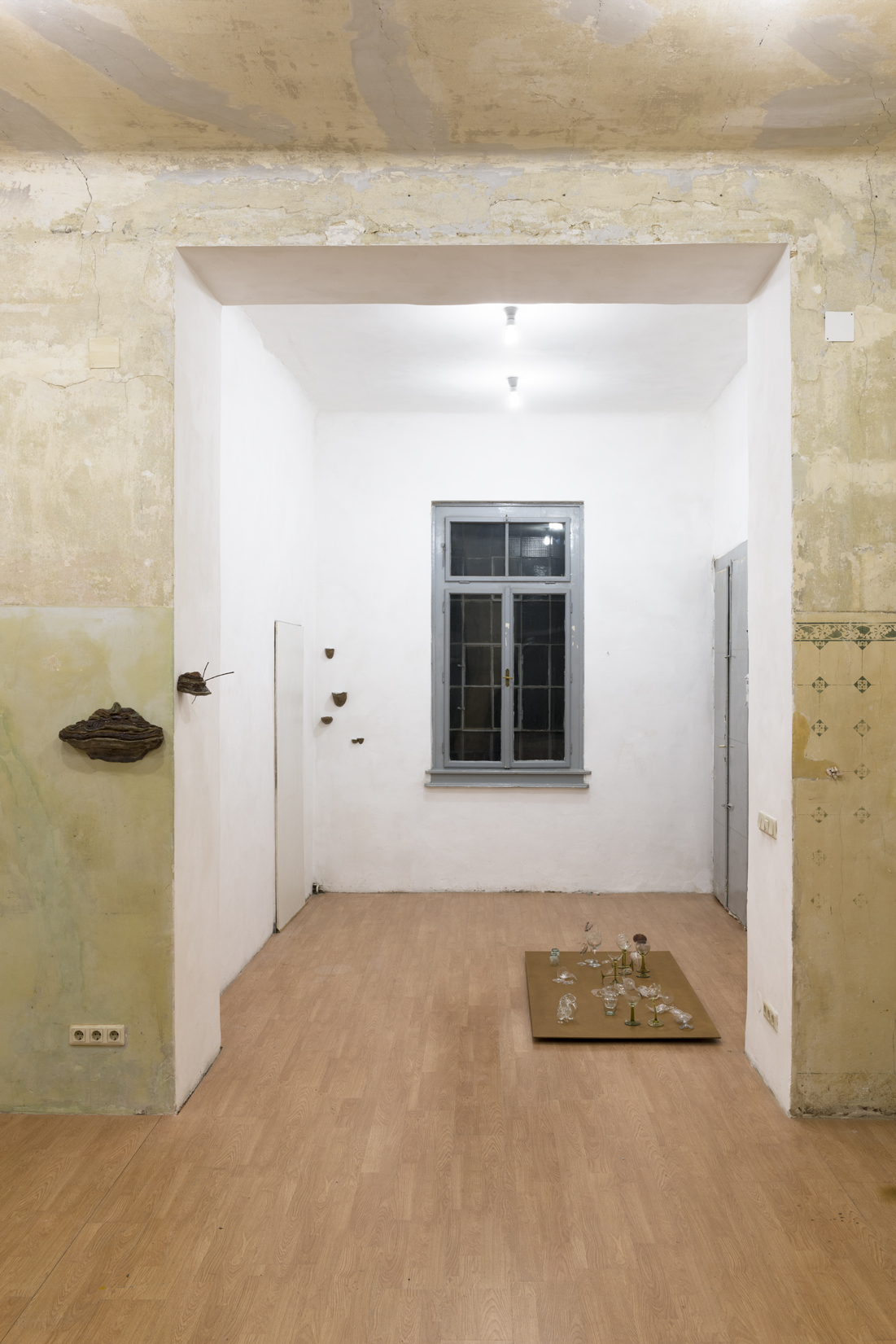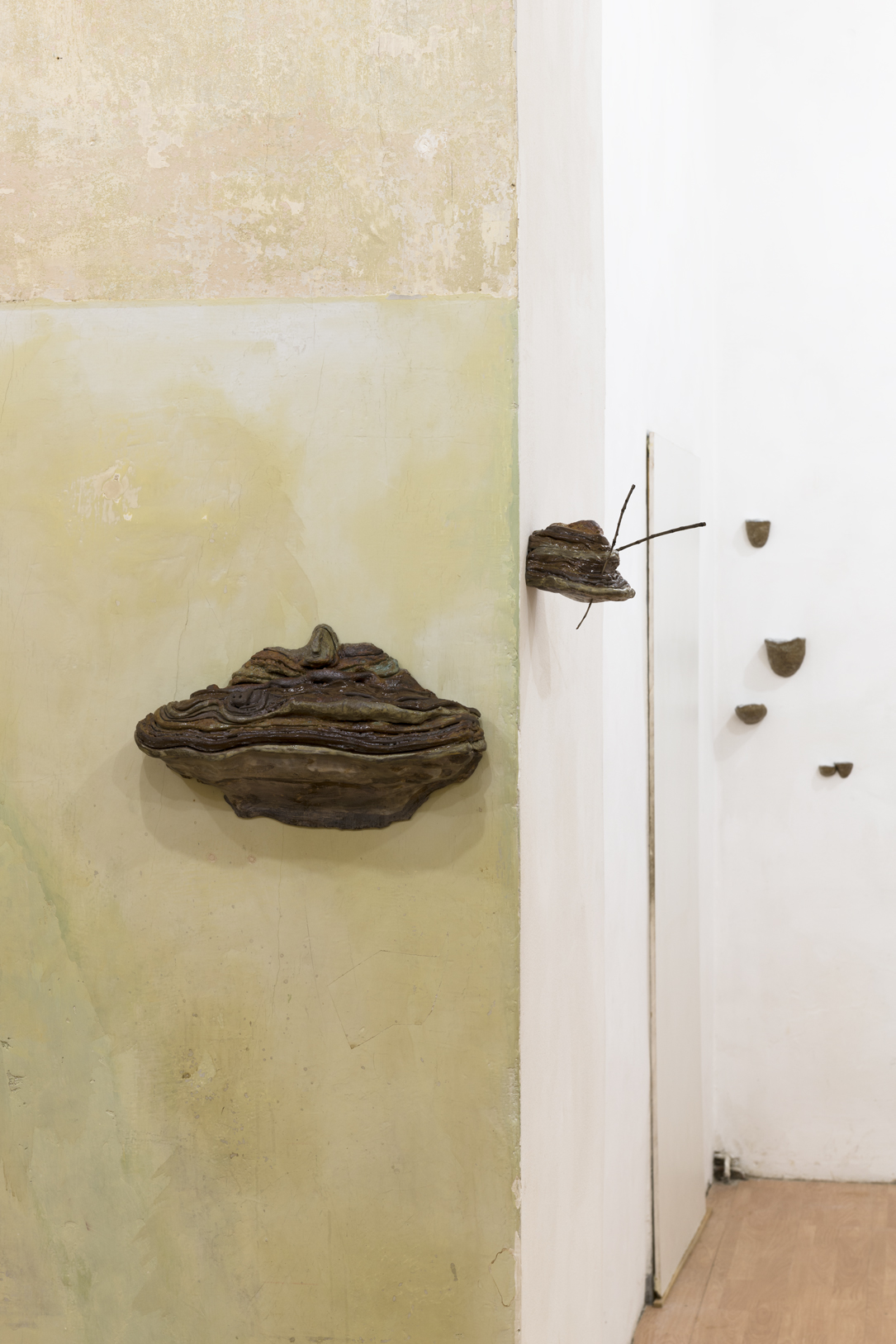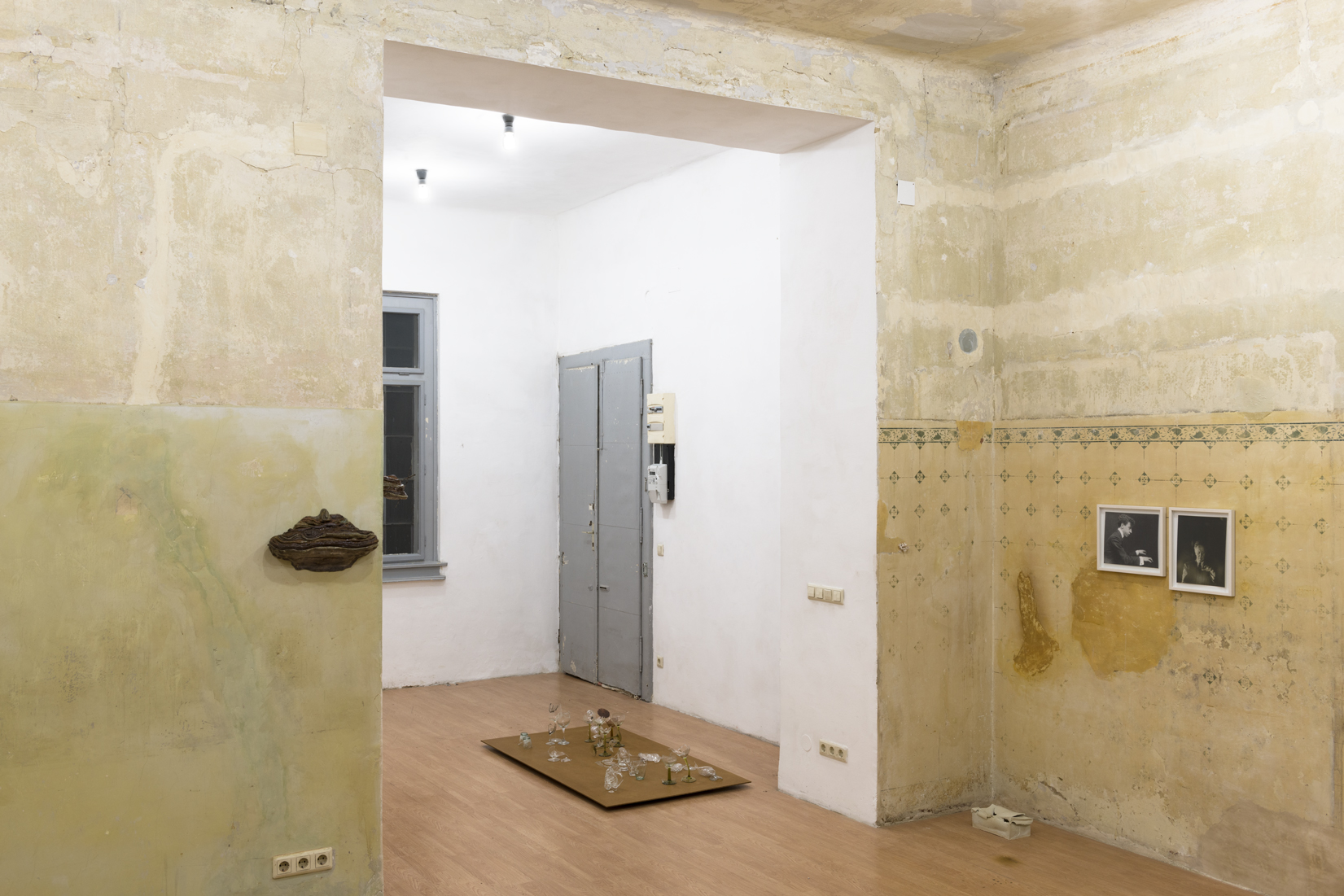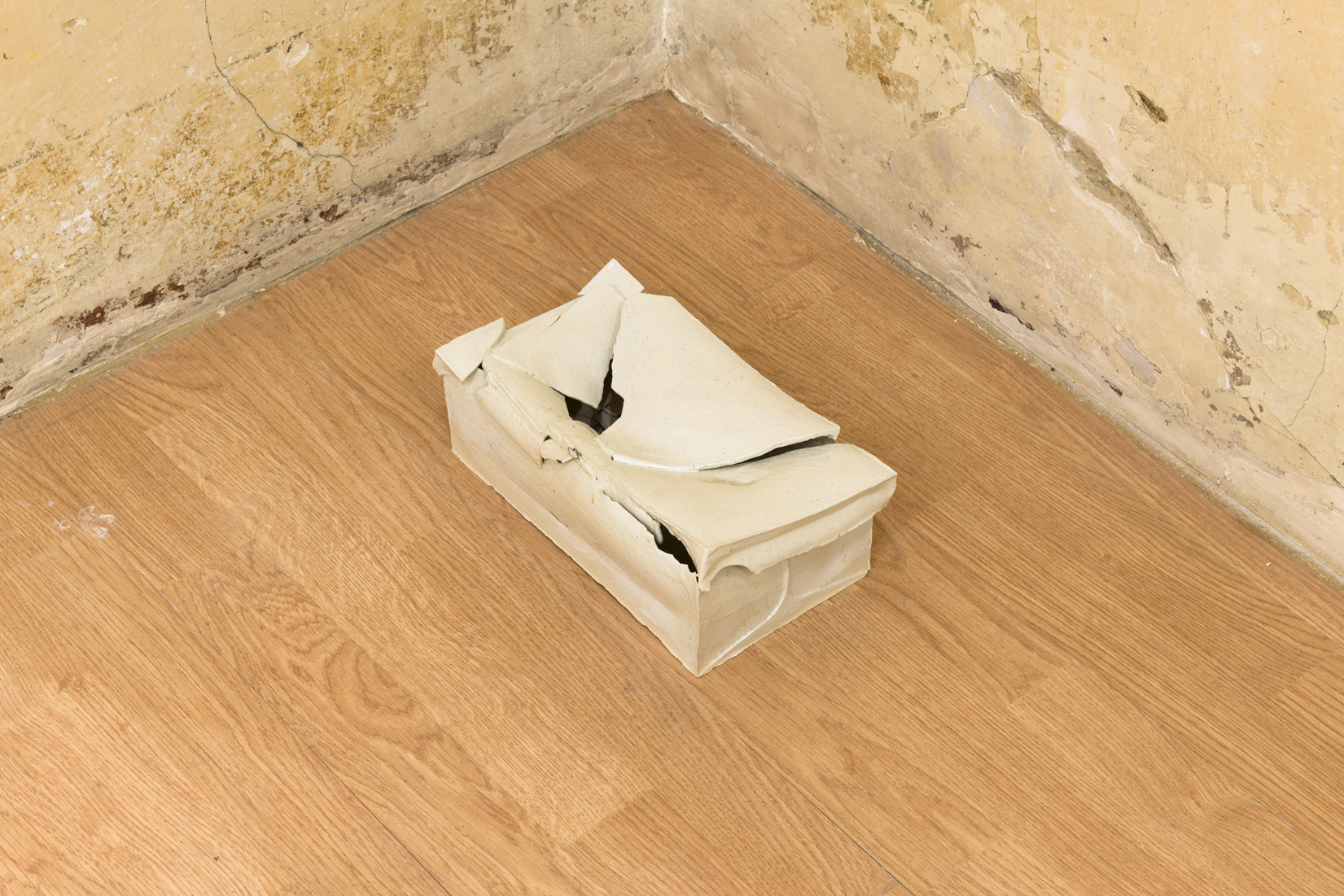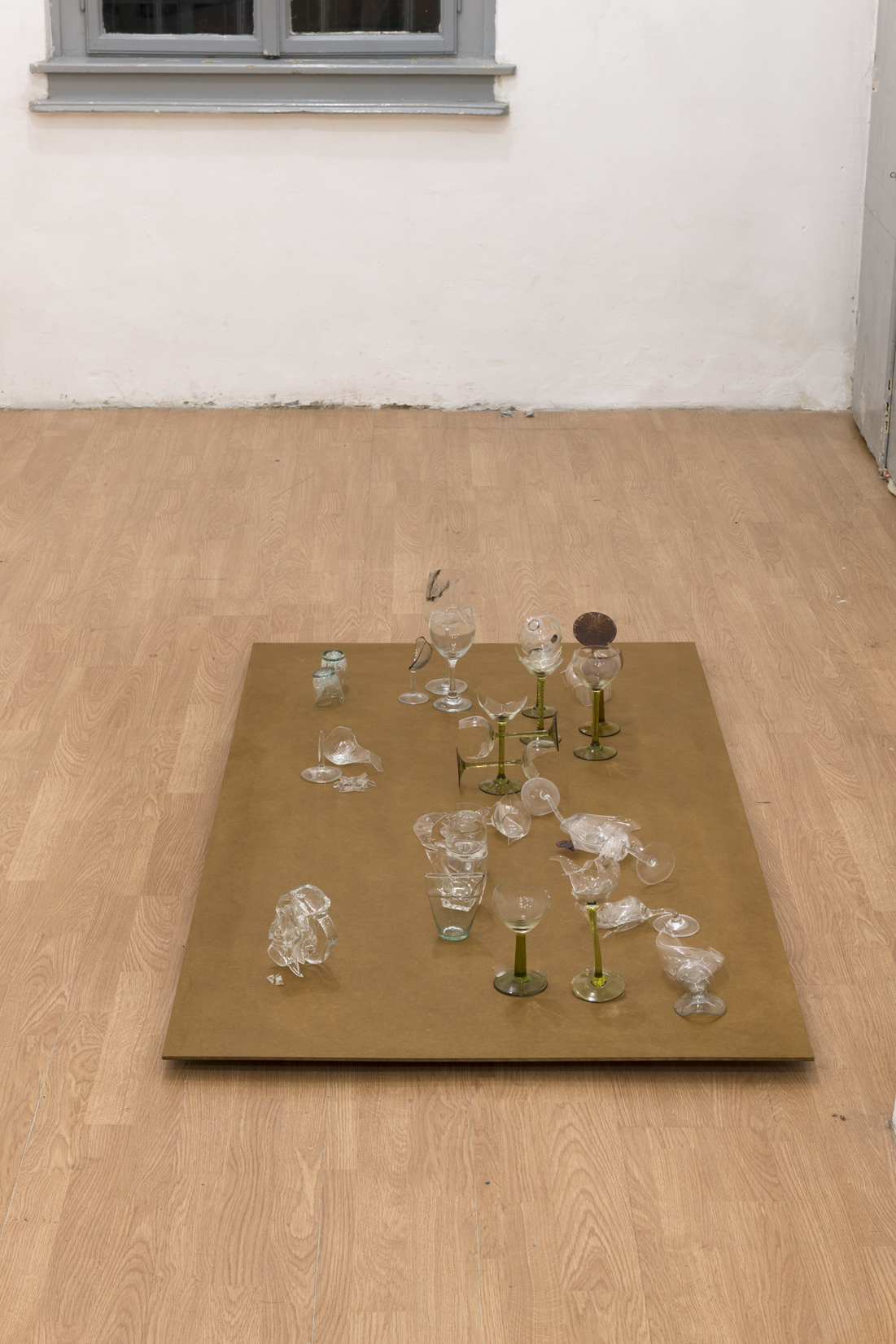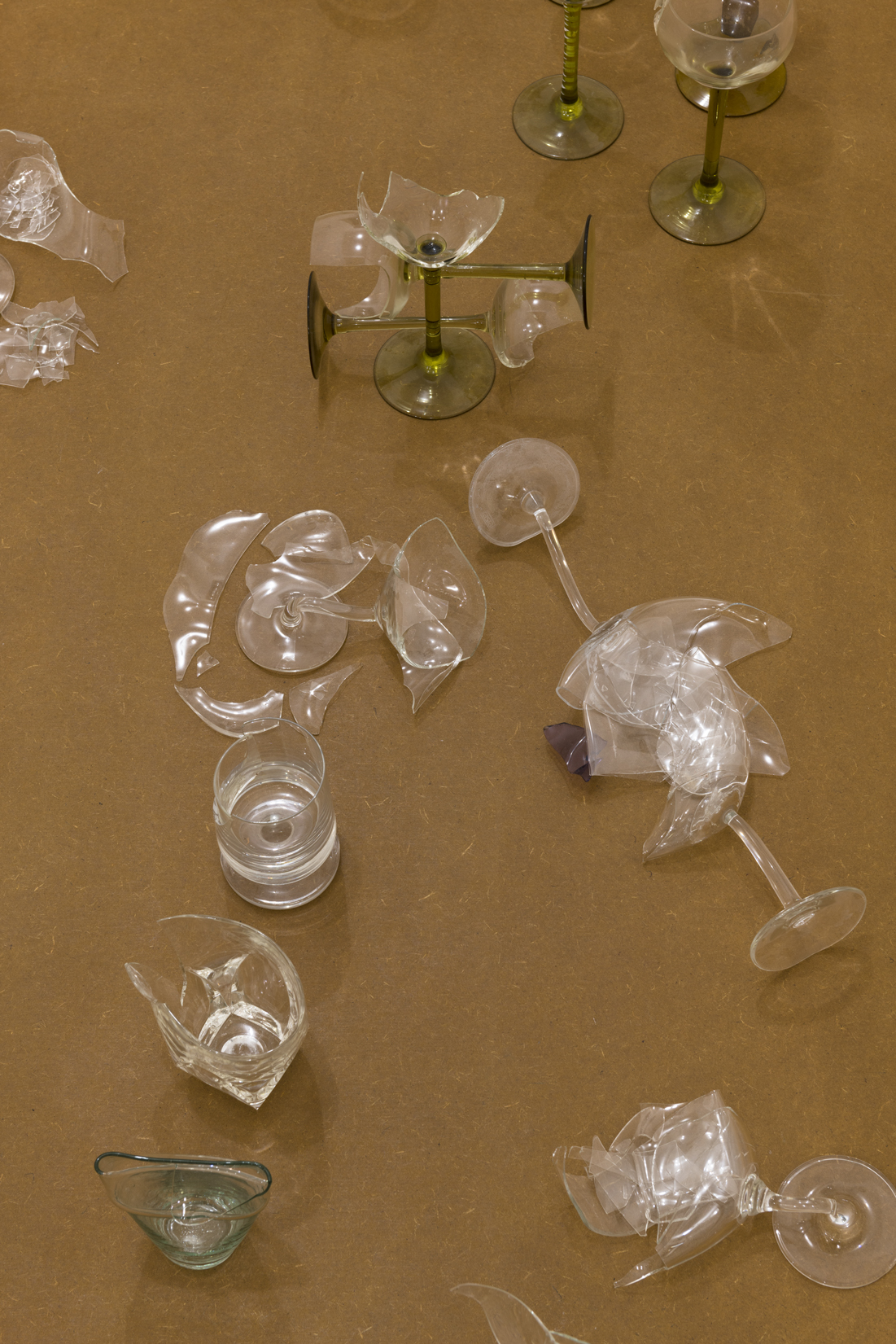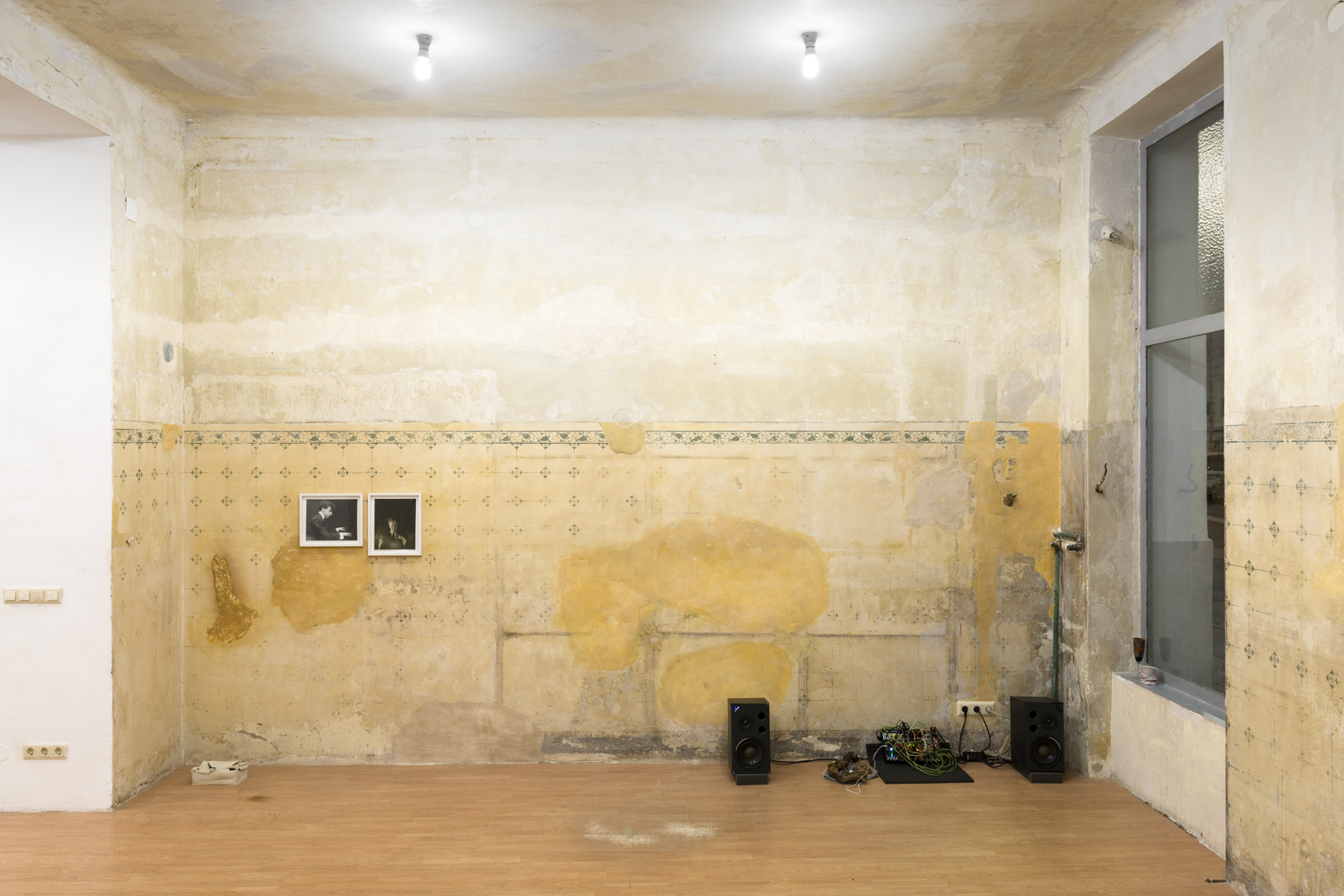Bernhard Schreiner
Bernhard Schreiner
PATCH SPRAWL
Jan 23 – Feb 6 2024
PATCH SPRAWL brings together things that were created between 2011 and 2024 to form an installation. A convolute held together by the gravity of interest. A proliferation of material, matter and imagination from the last thirteen years.
patch: to mend, patch up, put together, repair, patch, putty, put in place, rectify faults, make a makeshift repair
sprawl: sprawl, spread out, loll, swarm, spread out, stretch out, flail, fall lengthwise
“Seemingly unfinished, supposedly broken or ‘incorrectly’ repaired”, as the exhibition text for Mr Kev Moon (Kai Middendorff Galerie, 2019) put it. This could be added to: Transformed, moulded, deformed, forgotten, found … Despite the multitude of substantive adjectives, techniques and assembled materials (glass, ceramics, paper, fabric, porcelain, photography, sound and more), we do not find ourselves in an opulent presentation, but rather in a fragile one, with small works clustered together, sometimes swarming into this corner of the room, sometimes into that.
Ceramic fungi with names such as Orange moth (Cantharellus tinea), Giant moody crust or Magic winter shelf cover some parts of the wall (like the fungi themselves, these trivial names are fictitious, but are based on existing fungi species and their English common names), indicating that there might be more going on beneath the (wall) surface than a few visible fungal bodies would suggest. Mouldy picture frames, some empty, others with infestation overgrowing the frame contents, also populate the walls, “broken” utility glass the floor. It has apparently been transformed into creatures that have little to do with “use”. Some broken plates are similar.
The broken and the repaired always play a part, but these repairs never correspond to the “modern Western ideal of repair”. Because this “aims primarily at an effacement of its trace. In the best case, a repaired object is ‘like new’. Neither the interim damage nor the vestiges of its being corrected should catch the eye of the observer. In repair, an attempt is made to divest the repaired object of its temporality and to return it to an ‘original state’.” (Thomas Reinhardt, “The Cannibalisation of the Other. Mirror, Art, and Postcolonialism in Kader Attia’s Repair. 5 Acts.”, 2013) Rather, these repairs attempt to approach overwriting as an ideal. But the palimpsest-like amnesia is only temporary, the film tear is not permanent. The boundary between utility object and newly formed “meaningless” object usually remains sharp, but the “original state” is always just as present. (A practical test could even succeed with some of them!)
Only the sound cannot be patched up, nor does it lounge around in some corner, it spreads out, extends into the room (as is its nature), even if not always everywhere at the same time in constant intensity. “Sound surrounds, yet our relation to its enveloping, intrusive, fleeting nature is fragile (a game of Chinese whispers) rather than decisive” (David Toop, Sinister Resonance, 2011). In this respect, one could say: For any Plant or Mushroom #1, a modular synthesiser patch that takes minimal fluctuations in the measured resistance in the induced electric field of plants or mushrooms as its starting point, would be the central work. Despite the omnipresence of the sound, however, it is only part of a democratically imagined spatial installation. Ideally, its generative (= self-generating, changeable) character “speaks” to us, with us, through us – to those gathered, just as they naturally do to each other.
What’s more, you can at least hear some of the actually silent works present “sound” – you could try! “Listening is therefore an example of mediality, a question of recognising and engaging with what lies beyond the world of forms. When sound, silence and other modalities of auditory phenomena are represented by “silent” media, this association of mediumship becomes even clearer. There is an inherent voice in every written text; there is a suggestion of acoustic space in images” (David Toop, Sinister Resonance, 2011).
In order not to completely neglect the athletic dimension, perhaps also to indicate a possible “falling down lengthways” as an athletic act from the outset, Marcus Steinweg is quoted in conclusion:
“ATHLETICS Part of the athletic dimension of the practice referred to as reflection is its willingness to lose the ground beneath one’s feet. There is no thinking that is not bottomless. Which does not mean that it has no consistencies. The subject moves in small steps until the moment when it is forced to make leaps that ensure its survival in the inconsistent space that is its life. Thinking means hardly knowing what you are doing. But to do so with great precision” (Marcus Steinweg, 2023).
Opening hours during the exhibition:
Friday from 5 – 9pm
…or by any appointment!
Contact:
Marxergasse 16
A-1030 Wien
email: fox(at)udobohnenberger.com
With the kind support of:
![]()
